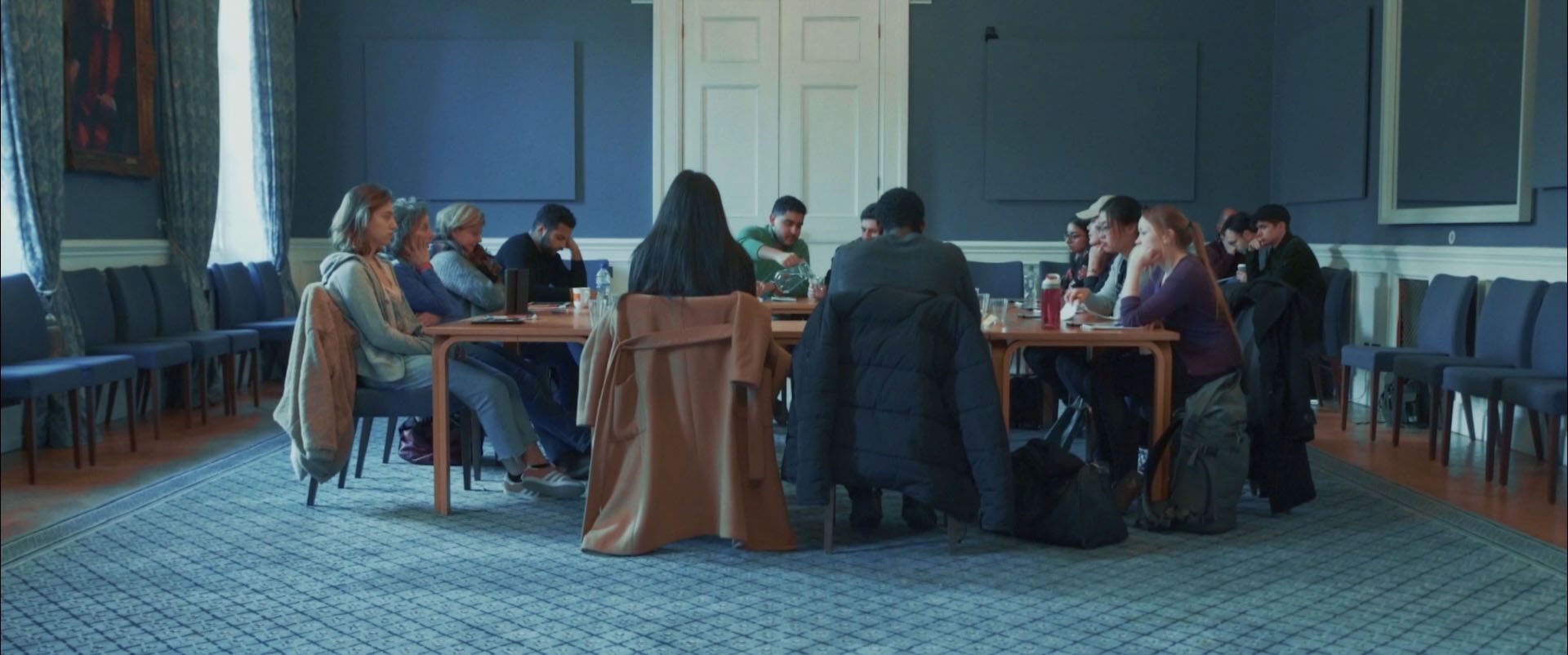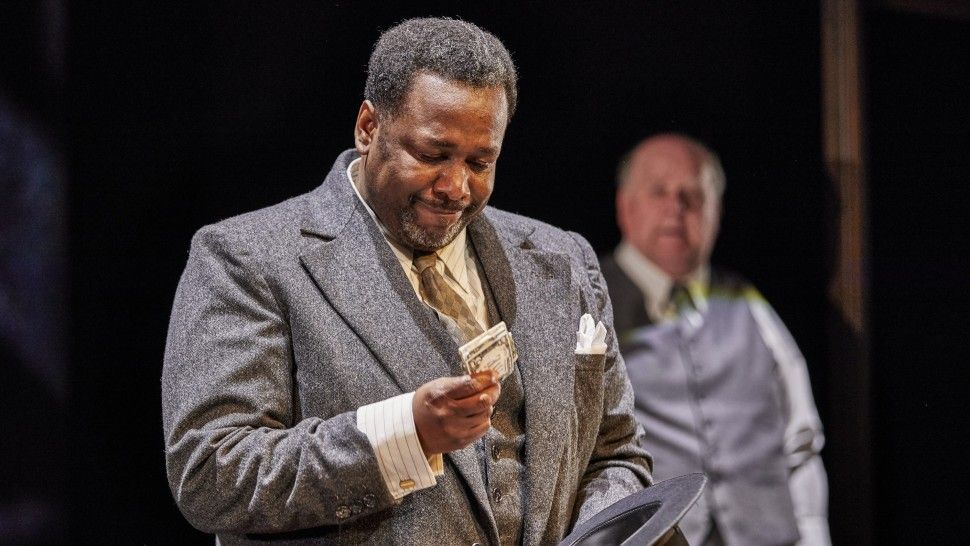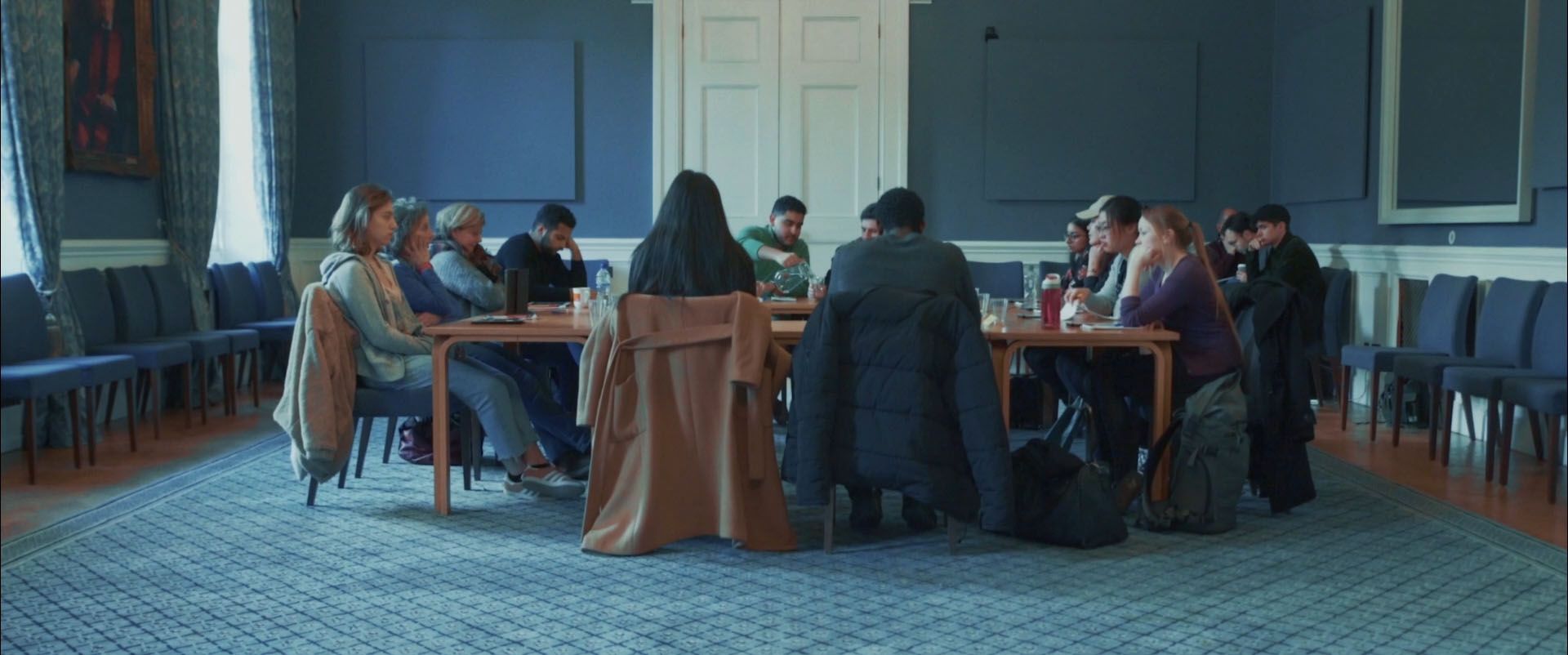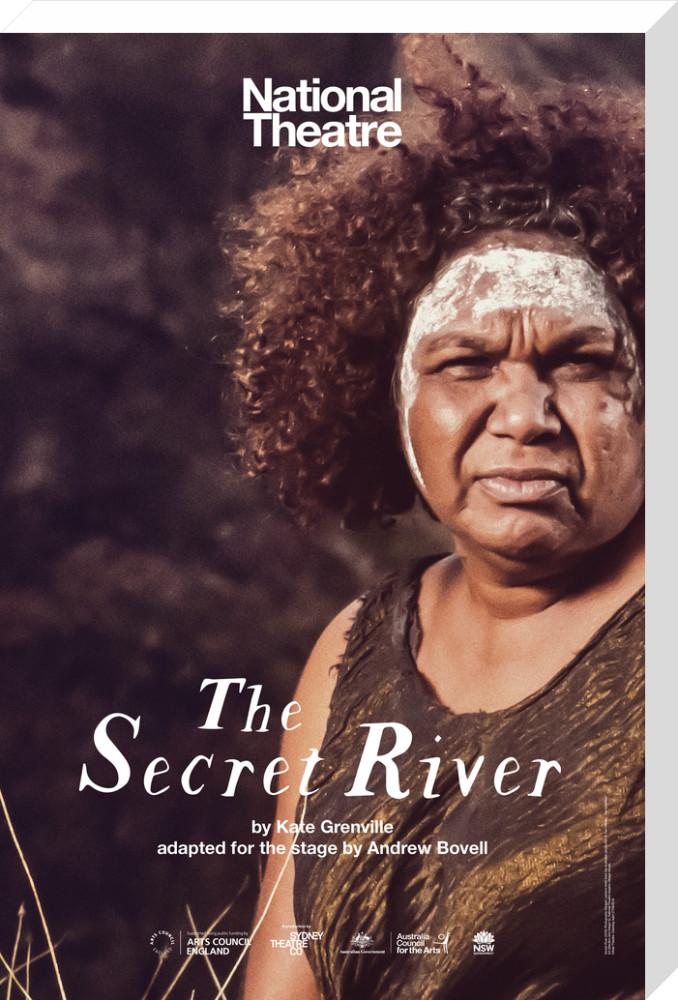With great power comes great responsibility: the ethics of interactive theatre
How should we care for audiences, what are theatre companies responsible for, and what do we discover when we start asking questions about the ethics of interactive theatre?

In interactive theatre, we’re often asking people to step out of their comfort zone, take a risk, do something different. That’s why a lot of people like immersive experiences - their power to transport audiences somewhere completely different. But with great power comes great responsibility - so this piece explores how we take care of our audiences. What are theatre companies responsible for? And what questions should we be asking about the ethics of interactive theatre? How do we create ‘accountable spaces’?
You can listen to the full post here…
No time to finish reading this now, or want it as a document to keep?
Pop your email in below and it’s yours!
So what are our responsibilities to audiences?
In November 2019, part of the roof of the Piccadilly Theatre in London’s West End collapsed during a performance of the Arthur Miller play Death of a Salesman, starring US actor Wendell Pierce. Fortunately, no one was seriously hurt, but the incident is a good starting point to start thinking about what theatre companies are responsible for: the responsibilities that they have to the people experiencing their work. It almost goes without saying that the venue -or place we present the show- should not place the audience in physical danger - the roof isn’t going to fall in, if there’s a fire everyone can evacuate safely etc. But what other responsibility do we have to audiences? Because although physical safety is important, it isn’t the whole story.
Let’s start with the less contentious stuff. There’s a responsibility around content - if you buy a ticket for Death of a Salesman with Wendell Pierce and you show up and it’s Hamlet with no sign of Wendell, that’s a breach of trust. You didn’t enter a contract to watch Shakespeare, and you expected a certain actor onstage. If you think you’re going to an interactive experience and you’re served traditional theatre, that’s not going to be satisfying either. So we have a duty to our audiences to show them something which is broadly in accordance with what we’ve advertised the experience to be.

There’s something around financial value, which is tricky because then we get into questions of value and how we measure it in art, but on a basic level, if the actors don’t know their lines, the set is falling down and the lights don’t work to the extent that you can’t really see people, that’s a problem. If our audiences have paid to experience a ‘finished’ show, then we have a responsibility to deliver something where attention has been paid to all elements of the production.
We have responsibilities around access. When theatres opened in summer 2021 after the COVID-19 pandemic, NIMAX were criticised for transferring musical Six to the Vaudeville Theatre, which has no onsite step-free toilet, and NIMAX’s chief exec Nica Burns published a statement committing to resolving the issue. Disabled audience members continue to have to fight for basic access rights but the balance is shifting: I can’t imagine a such swift and contrite response as Nica Burns’ even five years ago. There is a growing acceptance that we have responsibilities to all audience members, not just able-bodied and neurotypical ones.
Hospitality within the ethics of interactive theatre
What are theatre companies responsible for emotionally? How should we be taking care of people’s feelings? We want art to be powerful and transformative - but in the right way. And if the art that we make is immersive, if audiences are part of what is happening and we are asking them to invest emotionally perhaps more than they would need to while watching a traditional play, we need to think about how we take care of them.
I often think of inviting people into audience-centric theatre as an act of hospitality. Hospitality is an interesting word. It’s related to the word ‘hostility’. The root hospes is allied to the root hostis, which means both ‘stranger’ and ‘enemy’. So hospitality, as in hostilis (stranger/ enemy) + potes (having power), originally meant the power that the host has over the stranger/ enemy. In an act of hospitality, you have enormous power over the strangers you are welcoming - and -in my opinion- a responsibility to use that power for good, not evil.
Extending this hospitality and accepting a level of responsibility for audiences’ emotional well-being doesn’t have mean that all interactive experiences have to be cutesy and anodyne. There are ways of scaffolding participants’ experiences to support them to take risks - whatever a risk might look like to them. This is something Fast Familiar thought about a lot in making our digital artwork The Justice Syndicate.

The best laid plans…
In The Justice Syndicate, twelve audience members take the role of a jury. Each participant has an iPad that they use to look at evidence. They are prompted to discuss the case with their fellow jurors and to vote whether the accused is guilty or not guilty. There are no actors, and just one Fast Familiar company member in the corner, pressing ‘go’ on a laptop: we don’t speak or intervene. Over 90 mins that temporary society of twelve participants has to find a way of making a decision. The project is a collaboration with neuroscientist Kris De Meyer, who is interested in how groups make decisions - so although the format of the experience is a trial, this is a proxy for a group of strangers making a difficult decision. The experience is highly structured. At all moments, the system is directing what players should be doing - watching a video testimony, voting, discussing. There is also a debrief - partly about the underlying psychology and neuroscience - but also because we feel like we need to give people a chance to zoom out from the experience and transition back to real life.
We think a lot about the ethics of interactive theatre and we take our responsibility for audiences’ emotional well-being very seriously, so we’ve built various mechanisms into the audience-centric experience as safeguards. People see content warnings at three points -when they book, before they enter the room and immediately before the experience begins- as the ‘case’ is a sexual assault trial.
(When we took some of our artworks online during the COVID-19 pandemic, we made a conscious decision not to do this with The Justice Syndicate, as we didn’t feel confident that we’d be able to take care of participants to a degree we were happy with).
Within the experience, voting is secret. There is also a private eviction mechanism, which allows the group to remove any juror who they feel isn’t being respectful towards other players: anyone receiving a majority of eviction votes is asked to leave. We have run The Justice Syndicate over 70 times, and the vast majority of those times, we are happy that we’ve fulfilled our responsibility to our audience’s emotional well-being. But not always.
… still go astray
Earlier I referenced a content warning about the nature of the trial - a sexual assault case - please skip the following paragraph if you don’t want to read about that.
Within the case in The Justice Syndicate, both sides make arguments which are problematic - and which we consciously balance with testimony from real-world experts who contextualise the arguments. Within the fictional case, the prosecution use the defendant’s internet search history to suggest his BDSM tastes make him more likely to have tried to rape someone - and we have a psychologist who explains the research which shows the dangers of making reductive links between sexual fantasy and action. The defence use the woman’s history to try and suggest she fabricated the claim of attempted sexual assault - here, we have a clinical professional who works with sexual abuse survivors and victims who clarifies the rate of false reporting (less than 2%). With these experts and their contextualisation, we try to shape the nature and tone of discussions, to help participants discuss the case in a dispassionate and informed way. But we can’t guarantee the this will happen, and we had one show where two jury members launched into a character assassination of the victim in a way that another audience member told us later was very upsetting for them - this audience member knew the other two participants outside the context of the show and said that their relationship would be changed in light of the views they’d expressed. It had been upsetting for them to witness the views that their friends held.
In another performance, a jury member appointed themselves foreman of the jury. In our face-to-face shows, there is no prompt to appoint a foreman and this has only happened once. This juror, who was the oldest person in room who presented as a man, preceded to control who was allowed to speak. We expected the group to use the eviction mechanism: after all, we had provided them with a tool for a situation like this where one person was trying to dominate. They didn’t. Afterwards, I overheard two audience members discussing the so-called foreman’s behaviour and how overbearing it had been - and asking themselves why they hadn’t used the eviction mechanism.
What The Justice Syndicate does - like a lot of immersive theatre experiences - is to create a liminal space which is simultaneously real and not real, and where people can rehearse the difficult conversations they might avoid in life. The structures that we’ve put in place around emotional safety work the great majority of the time but not always. Because sometimes the structural inequalities of society find their way into the playing space. On these two occasions that is what happened: in the show, as in the world, there was a preponderance of blaming victims for sexual violence and allowing old white men too much space. So in our considerations of the ethics of interactive theatre, we need to ask how, in a form which gives audiences agency, we avoid reproducing the inequities from the world outside within our artworks?
Accountable spaces: ‘this production is not responsible for how its audiences behave’?
In 2019, the National Theatre presented a production of Australian writer Kate Grenville’s book The Secret River. It received some very favourable reviews, with national papers like the Telegraph, the Times and the Guardian giving it four or five stars. The response from bloggers was more mixed. Writer KimProv (who self-describes as ‘Not professional or trained. Avoiding the stale, male, pale stuff.’) criticised the production for telling a story of white Europeans violently colonising Australia and the impact of this on the people already living there - through a prism of whiteness, inviting sympathy for the colonisers.

Describing their experience watching the production, KimProv writes:
I have written about Inappropriate White Laughter before. It happens a lot. I have rarely experienced it to quite the extent that I do here. Racial slurs, racial shaming, even racial violence all provoke waves of hearty laughs. What is this? What play did this audience think it was coming to see? Did it get what it came for? Several times it takes real strength for me not to leave my aisle seat and walk out.
Later in the review, they write:
This production of The Secret River is not responsible for how its white audiences behave.
And perhaps KimProv is right, perhaps the National Theatre is not responsible for the racist reactions of its audiences. Personally, I think this is a very generous sentiment but to accept the logic, let’s say the theatre or theatremakers are responsible for what they put on the stage and not for the audience’s reaction. But in interactive theatre, the audience is on the stage - so we must take some responsibility for their reactions. And we live in a society where ableism, homophobia, racism, sexism, transphobia, and prejudice based on ability, asylum status, class, ethnicity, gender, gender presentation, nationality, and religion are common - and structurally embedded. Audience-centric experiences do not exist in a vacuum so how do we stop structural inequality and prejudice manifesting within them? Surely this has to be part of a more active ethics of interactive theatre.
How can we take better care?
It would be disingenuous to end this with ‘how to’ guide from Fast Familiar’s practice. We’re constantly asking ourselves these questions but we don’t have answers. It’s an evolving process so these are some things we’re doing:
emotional risk assessments
Theatres are good at physical safety, with tools like risk assessments commonplace. We’ve started thinking about what we can borrow or translate into considering emotional safety. This merges with something we already do, learned from our friends Non Zero One, which is a ‘Chaos List’. It’s a list of all the things that go wrong, preceded by ‘what happens if…’. So ‘what happens if there’s a power cut?’, ‘what happens if a participant is taken ill?’, ‘what happens if this important object breaks?’. We’ve started adding ‘what happens if a participant has a history with X subject?’, ‘what happens if it’s a majority white audience?’ etc. The process has shown up the need to diversify our own team - the greater the amount of viewpoints within the team, the less likely we are to miss things that will be damaging to certain groups or individuals. We are not there yet.
![We learnt about the Chaos List from non zero one, who made you’ll see me [sailing in antarctica]. FF use a version of the Chaos List as a way of thinking about the ethics of interactive theatre. In this picture, a group of people sit in a circle on top of a building in London - the London eye is visible behind them. There is a shiny object suspended in the sky above them](https://workroom.fastfamiliar.com/content/images/2021/11/4-youll-see-me-c-non-zero-one.jpeg)
accountable space guidelines
We spent quite a bit of time during the pandemic examining our practice and how we could be better. We looked at the approach of organisations like DIY Space for London (especially their Accountability Working Group) and their Accountability Agreement; the Sisters Uncut Toolkit; and the WithForAbout 2020 conference, and created our own accountability agreement.
(We talk about ‘accountable spaces’ rather than ‘safe spaces’ because you can’t really guarantee safety as you won’t know what every person needs to feel safe, but you can state a series of principles and say that people will be held accountable for their behaviour in accordance with those principles.)
We’re still figuring out how to use that accountability agreement - we ask people to read it before purchasing a ticket to one of our group experiences but I don’t imagine that many people do. It’s hard to get the level of detail you need not to be reductive into a digestible-length document. We’re considering a shorter version that we read at the start of an experience.
debriefs
All our group experiences connect people and we need to create a space for them to disconnect, leave anything that they don’t want to take with them and go back to the world: we follow all our group experiences with a facilitated debrief where participants can talk about their experience. It can be a space for decompression and processing.
carefully thinking about the form
Fast Familiar make immersive experiences but they don’t all take the same form. Increasingly we think about the question or subject that we want to explore in a given artwork and ask ourselves what audience-centric set-up will allow the audience to get the most from that experience, including their emotional well-being. Much of what we make are group experiences but some things need to be experienced without the pressure that being part of a social environment adds. The Window takes the form of a binaural audio piece, experienced on headphones and wearing a blindfold, because we felt that the subject matter -Alzheimer’s and family secrets- was potentially very emotionally-charged. We felt we’d give our audience members a better experience (and achieve our artistic aims more effectively) by making it a very private experience where participants could focus on the story and their own relationship to it, without being inhibited by sharing space with others. We also followed each show of The Window with a debrief with clinicians and researchers, so that audiences could talk through any concerns that had arisen for them during the experience.
learning from others
We recognise the great work done by Tourette’s Hero and Battersea Arts Centre, making every performance a relaxed performance - we’re trying to figure out how that translates for digital art. We borrow tools from the world of computing, allowing us to flag messages and images sent during our dialogic artwork Social Sandwich that might cause upset or offence - and invite players to consider how what they’re sharing might affect their partner. We listen to feedback from players about how a content warning should be rephrased or expanded. And we try to share what we’ve learned - including when we don’t get it right.
If you’d like to discuss things you’re doing within your own practice, ask us any questions or make any suggestions, please get in touch. We are by no means experts and we believe change will only happen if we learn from each other.

